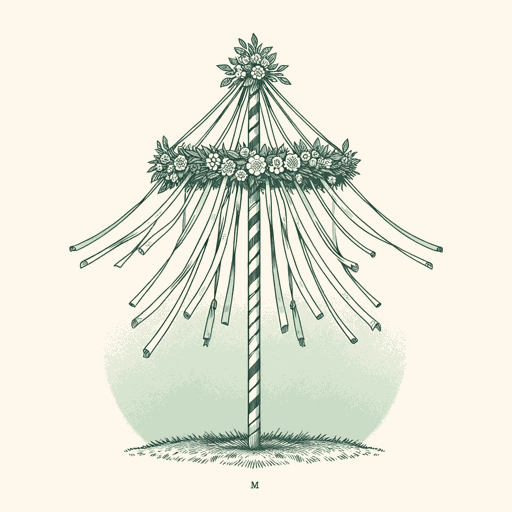50 pages • 1 hour read
Nathaniel HawthorneThe Blithedale Romance
Fiction | Novel | Adult | Published in 1851A modern alternative to SparkNotes and CliffsNotes, SuperSummary offers high-quality Study Guides with detailed chapter summaries and analysis of major themes, characters, and more.
Summary and Study Guide
Overview
The Blithedale Romance (1852) is a novel by American author Nathaniel Hawthorne. This work, Hawthorne’s third “romance,” is loosely based on his experiences at Brook Farm, an experimental utopian commune established near Boston in the 1840s. Like Hawthorne’s earlier novels The Scarlet Letter and The House of Seven Gables, The Blithedale Romance is a work of Dark Romanticism, focusing on the negative aspects of human nature and the failure of Enlightenment thought.
This study guide references the 1965 Ohio State Center for Textual Studies edition of the book.
Content Warning: The novel (and this guide) refer to death by suicide.
Plot Summary
The novel is told from the perspective of a young poet named Miles Coverdale and begins with his preparations to leave his Boston bachelor pad and start a new life at the Blithedale Community. Having just witnessed the Veiled Lady, a popular and mysterious medium who recently stopped making public appearances, Coverdale encounters Mr. Moodie, an elderly Bostonian who asks if the young man knows a woman named Zenobia, who is involved with the community.
The next morning, Coverdale starts his journey to Blithedale with three other individuals, full of hope that a new and better life awaits. Upon their arrival, the group is welcomed by Zenobia, a charismatic feminist. Over a simple dinner with the current residents, the new arrivals learn more about the agrarian community and its goals of honest toil and spiritual advancement.
Another newcomer, Hollingsworth, brings with him an unexpected guest—a sickly girl named Priscilla. Coverdale observes these individuals with interest, noting that Priscilla seems obsessed with Zenobia and expresses a desire to remain at her side.
Despite a sudden sickness that impedes his enjoyment of Blithedale during the first part of his stay, Coverdale learns to appreciate the community and its denizens as the weeks progress. In particular, the young poet strikes up a friendship with Hollingsworth, an energetic and caring philanthropist with a passion for reforming criminals, and becomes close to Zenobia and Priscilla.
At first, Coverdale embraces life at Blithedale, relishing in his newfound ability to work outdoors and appreciating the picturesque aspects of the natural world. His friendships with Hollingsworth, Zenobia, and Priscilla deepen. An observant man, Coverdale traces the changes in Priscilla, who grows healthy and confident in contrast to her earlier reticence and melancholy. In addition, he notes that both women are attracted to Hollingsworth.
Strangers begin to visit the agrarian commune. One day, Moodie appears at Blithedale, revealing that Priscilla is his daughter. Concerned with her well-being, Moodie observes Priscilla from a distance before leaving. Shortly thereafter, a stranger named Westervelt appears and asks Coverdale to set up a private meeting between him and Zenobia. Coverdale mistrusts the man, and although telling him where to find Zenobia, refuses further assistance. Later, Coverdale, who has found a hidden “hermitage” in the branches of a pine tree, overhears a conversation between Zenobia and Westervelt concerning Priscilla. Although sensing a past relationship between Zenobia and the stranger, Coverdale resolves to remain silent about his knowledge.
Zenobia’s mysterious past continues to fascinate Coverdale, and he relates a story that the charismatic woman tells the society. In this tale, Zenobia suggests that Priscilla, whose past remains a secret, is actually the Veiled Lady. Despite Priscilla’s nervous reaction to the story, the four continue to spend time together, meeting at a spot dubbed “Eliot’s Pulpit.” There, Hollingsworth frequently preaches about his philanthropic goals and even expresses his misogynistic views on women. To Coverdale’s shock, Zenobia agrees with Hollingsworth’s observations and concedes that women should function as merely men’s helpmates. Following Hollingsworth’s sexist diatribe, Coverdale witnesses Zenobia and Hollingsworth sharing a moment of intimacy.
Although Coverdale expresses admiration for Hollingsworth’s passion, the two men eventually fall out. When Hollingsworth demands that Coverdale support his plans to rebuild Blithedale as a center for criminal rehabilitation, the young poet refuses. His relationships with his former friends in tatters, Coverdale decides to leave Blithedale and return to Boston.
In Boston, Coverdale spends his days observing the residents of a boardinghouse across from his hotel. To his surprise, he sees Zenobia and Priscilla—and visits them. The two women react to his presence coldly, and when Westervelt arrives to take the pair to a concert, Coverdale is asked to leave.
Confused and hurt, Coverdale turns to Moodie, who provides the young poet with a history of his life and family and reveals that he’s the father of both Zenobia and Priscilla. Originally called Fauntleroy, Moodie was once a well-off young man with a wife and daughter, the latter who eventually took the name Zenobia. Due to an unspecified financial crime, Moodie lost his wealth, his wife died, and his first daughter was raised by members of his family. A pauper, Moodie wed again, fathering his second daughter, Priscilla. A strange child, Priscilla attracted the attention of a gentleman who used her in his occult exhibitions.
When he attends a spiritual performance at the Village Hall, Coverdale confirms the identity of Priscilla as the Veiled Lady and Westervelt as the “wizard.” Also in attendance is Hollingsworth, who interrupts the proceedings by getting up on stage and removing Priscilla’s veil. Hollingsworth returns to Blithedale with Priscilla, where they join up with Zenobia. Coverdale follows the group some days later and encounters the community members dressed in an assortment of bizarre historical and mythological costumes. The group chases him to Eliot’s Pulpit, where he meets up with Hollingsworth, Zenobia, and Priscilla.
Realizing that the three just argued, Coverdale recognizes the end of friendship between Zenobia and Hollingsworth. Accused by Zenobia of greed and selfishness, Hollingsworth declares his love for Priscilla and, taking the younger woman with him, leaves the area. Zenobia, weeping, tells Coverdale that she no longer believes in Blithedale and intends to become a nun. She instructs Coverdale to tell Hollingsworth that he has killed her and she will haunt him. After falling asleep at Eliot’s Pulpit, Coverdale decides that Zenobia is in danger and hurries to ask Hollingsworth and another community member for help. After a midnight search of the fields and meadows, the group finds Zenobia’s body in the river. The community buries her in the spot where she once planned to share a cottage with Hollingsworth.
Years later, Coverdale visits Hollingsworth and Priscilla, who have married. He observes that Hollingsworth never achieved his dream of creating a rehabilitation center for criminals and instead is beset by guilt, blaming himself for Zenobia’s death. Likewise, Coverdale’s life has been lackluster. In the final segment of the novel, he reveals that not only has he left Blithedale and given up poetry, but he also holds an unrequited love for Priscilla.
Related Titles
By Nathaniel Hawthorne

Dr. Heidegger's Experiment
Nathaniel Hawthorne

Ethan Brand
Nathaniel Hawthorne

My Kinsman Major Molineux
Nathaniel Hawthorne

Rappaccini's Daughter
Nathaniel Hawthorne

The Ambitious Guest
Nathaniel Hawthorne

The Artist of the Beautiful
Nathaniel Hawthorne

The Birthmark
Nathaniel Hawthorne

The Hollow of the Three Hills
Nathaniel Hawthorne

The House of the Seven Gables
Nathaniel Hawthorne

The Marble Faun
Nathaniel Hawthorne

The Maypole Of Merry Mount
Nathaniel Hawthorne

The Minister's Black Veil
Nathaniel Hawthorne

The Scarlet Letter
Nathaniel Hawthorne

The Wives of the Dead
Nathaniel Hawthorne

Young Goodman Brown
Nathaniel Hawthorne

